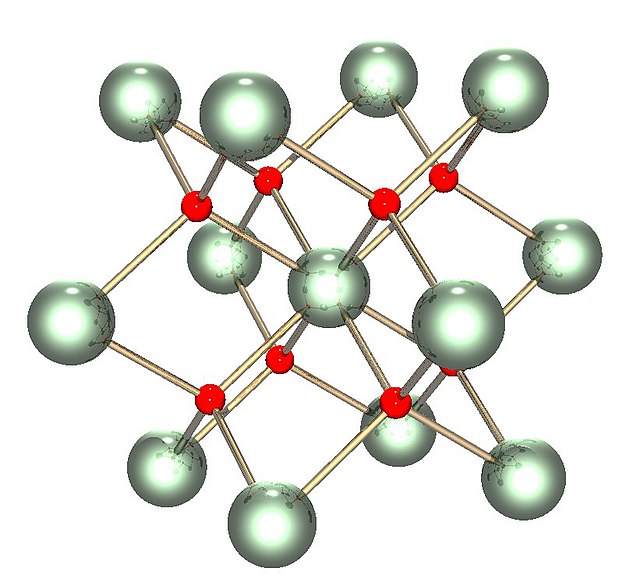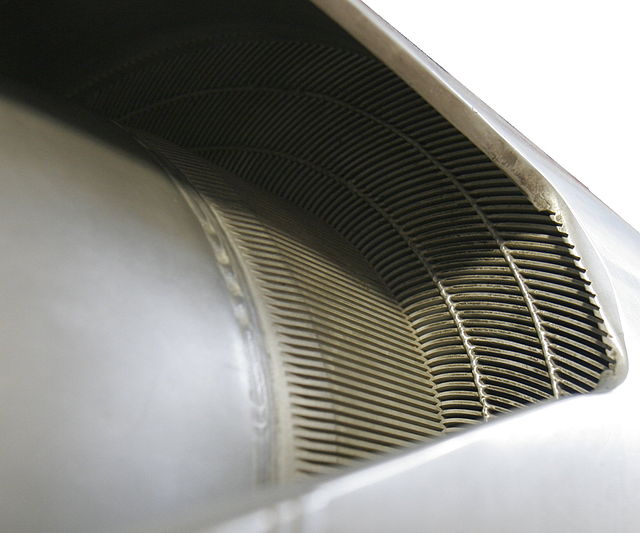The nuclear fuel cycle, also called nuclear fuel chain, is the progression of nuclear fuel through a series of differing stages. It consists of steps in the front end, which are the preparation of the fuel, steps in the service period in which the fuel is used during reactor operation, and steps in the back end, which are necessary to safely manage, contain, and either reprocess or dispose of spent nuclear fuel. If spent fuel is not reprocessed, the fuel cycle is referred to as an open fuel cycle ; if the spent fuel is reprocessed, it is referred to as a closed fuel cycle.
The nuclear fuel cycles describes how nuclear fuel is extracted, processed, used, and disposed of
4 Nuclear fuel – a compact, inert, insoluble solid
The solid state structure of uranium dioxide, the oxygen atoms are in green and the uranium atoms in red
The integral fast reactor concept (color), with the reactor above and integrated pyroprocessing fuel cycle below. A more detailed animation and demonstration is available.
Nuclear fuel is material used in nuclear power stations to produce heat to power turbines. Heat is created when nuclear fuel undergoes nuclear fission.
Close-up of a replica of the core of the research reactor at the Institut Laue-Langevin
Nuclear Regulatory Commission (NRC) photo of unirradiated (fresh) fuel pellets.
NRC photo of fresh fuel pellets ready for assembly.
NRC photo of fresh fuel assemblies being inspected.








